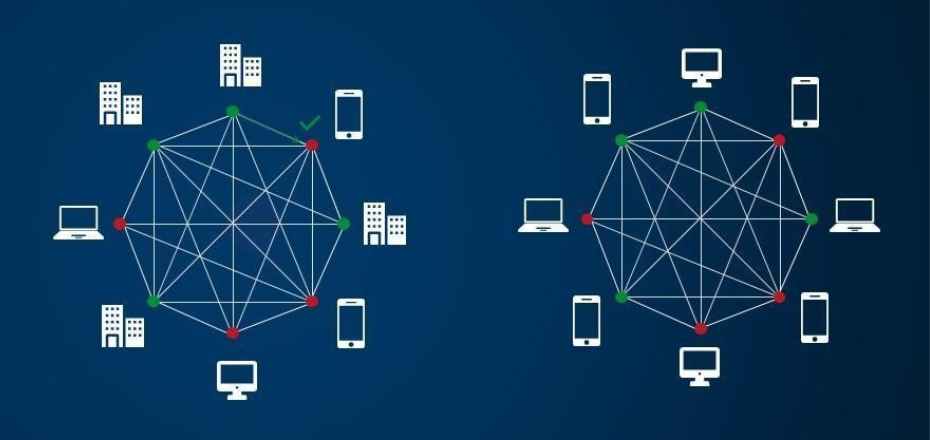I was recently in a class teaching a bunch of students about Blockchain technology when I realized (after conducting a short survey with them) that many weren’t aware about the importance or what is blockchain security all about or whether if there are any threats or whatsoever. Hence I decided to write this piece.
Blockhain as you already know, is renowned for its security features, including decentralization, immutability, and cryptographic security. However, like any digital technology, it is not impervious to threats.
Understanding the potential risks and implementing best practices is crucial for maintaining the security and integrity of blockchain networks. This article explores the various threats to blockchain security and offers best practices to mitigate these risks.
Understanding Blockchain Security

-
Decentralization
Unlike traditional centralized systems, blockchain operates on a peer-to-peer network where each node has a copy of the entire blockchain. This reduces the risk of a single point of failure.
-
Immutability
Once data is added to the blockchain, it cannot be altered or deleted. This immutability ensures data integrity and prevents tampering.
-
Cryptographic Security
Blockchain uses cryptographic techniques to secure transactions and control the creation of new units. Each block contains a cryptographic hash of the previous block, creating a secure chain.
Blockchain Vulnerabilities and Threats

Despite its robust security features, blockchain technology faces several threats. Understanding these threats is the first step in developing effective security measures.
-
51% Attack
- A 51% attack occurs when a single entity or group of entities controls more than 50% of the network’s mining power. This allows them to manipulate the blockchain, double-spend coins, and block other transactions.
- Example: In 2019, the Ethereum Classic blockchain experienced a 51% attack, resulting in the reorganization of its blockchain and the double-spending of several transactions.
-
Sybil Attack
- In a Sybil attack, an attacker creates multiple fake identities (nodes) to gain control of the network. This can disrupt the network’s functionality and manipulate consensus mechanisms.
- Example: Sybil attacks are a potential threat to peer-to-peer networks, including blockchain-based networks, where the attacker seeks to influence the network’s decision-making process.
-
Smart Contract Vulnerabilities
- Smart contracts are self-executing contracts with the terms directly written into code. Vulnerabilities in smart contracts can lead to exploits, such as reentrancy attacks, where an attacker repeatedly calls a function before the previous execution is completed.
- Example: The DAO attack in 2016 exploited a vulnerability in a smart contract, resulting in the theft of approximately $50 million worth of Ether.
-
Phishing Attacks
- Phishing attacks involve tricking users into revealing sensitive information, such as private keys or login credentials. Attackers often use fake websites or emails that appear legitimate.
- Example: Users of various blockchain platforms have fallen victim to phishing attacks, losing access to their wallets and funds.
-
Ransomware
- Ransomware is malicious software that encrypts a victim’s data and demands a ransom to decrypt it. While not unique to blockchain, ransomware attacks can target blockchain networks and cryptocurrency exchanges.
- Example: In 2021, the Colonial Pipeline ransomware attack highlighted the vulnerability of critical infrastructure to ransomware, though not directly related to blockchain.
Best Practices to Enhance Security for Blockchains
-
Regular Security Audits
- Conduct regular security audits of the blockchain network and smart contracts to identify and fix vulnerabilities. Third-party security firms can provide comprehensive audits and penetration testing.
- Example: Ethereum-based projects often undergo security audits by firms like ConsenSys Diligence and CertiK to ensure the safety of their smart contracts.
-
Multi-Factor Authentication (MFA)
- Implement multi-factor authentication for accessing blockchain networks and cryptocurrency wallets. MFA adds an extra layer of security by requiring users to provide two or more verification factors.
- Example: Many cryptocurrency exchanges, such as Coinbase and Binance, offer MFA options to protect user accounts.
-
Cold Storage for Cryptocurrencies
- Store the majority of cryptocurrencies in cold storage, which is offline and less susceptible to hacking. Only keep a small amount in hot wallets for daily transactions.
- Example: Cryptocurrency exchanges like Kraken use cold storage to secure a large portion of their customers’ funds.
-
Decentralized Consensus Mechanisms
- Use decentralized consensus mechanisms, such as Proof of Stake (PoS) and Delegated Proof of Stake (DPoS), to reduce the risk of centralization and 51% attacks.
- Example: Ethereum’s transition to Ethereum 2.0 and PoS aims to improve security and scalability.
-
Secure Smart Contract Development
- Follow best practices for secure smart contract development, including code reviews, formal verification, and using standardized libraries.
- Example: The OpenZeppelin library provides secure and audited smart contract templates for Ethereum developers.
-
User Education and Awareness
- Educate users about the importance of security practices, such as safeguarding private keys, recognizing phishing attempts, and using secure connections.
- Example: Many blockchain platforms and exchanges offer educational resources to help users understand security risks and best practices.
Advanced Blockchain Security Measures

In addition to the best practices mentioned above, advanced security measures can further enhance blockchain security.
-
Zero-Knowledge Proofs (ZKPs)
- Zero-Knowledge Proofs allow one party to prove to another that a statement is true without revealing any additional information. ZKPs can enhance privacy and security in blockchain transactions.
- Example: Zcash uses ZKPs to enable private transactions, where the transaction details are hidden while still being verifiable.
-
Homomorphic Encryption
- Homomorphic encryption allows computations to be performed on encrypted data without decrypting it. This can protect sensitive data in blockchain transactions and smart contracts.
- Example: Homomorphic encryption is being explored for secure voting systems and confidential data processing on blockchain platforms.
-
Quantum-Resistant Cryptography
- With the advent of quantum computing, traditional cryptographic algorithms may become vulnerable. Quantum-resistant cryptography aims to develop algorithms that can withstand quantum attacks.
- Example: Research is ongoing to develop quantum-resistant algorithms, such as lattice-based cryptography, for future-proof blockchain security.
-
Blockchain Interoperability Solutions
- Interoperability solutions enable different blockchain networks to communicate and share information securely. This can enhance security by distributing risk across multiple networks.
- Example: Polkadot and Cosmos are projects focused on blockchain interoperability, allowing secure data transfer between different blockchains.
Case Studies in Blockchain Security

Several real-world examples highlight the importance of blockchain security and the effectiveness of best practices.
-
Bitcoin
- Despite being the first and most well-known blockchain, Bitcoin has faced numerous security challenges. The network has withstood multiple 51% attack attempts, highlighting the importance of decentralization and strong consensus mechanisms.
- Example: In 2014, mining pool GHash.io briefly controlled over 50% of the Bitcoin network’s hashing power, raising concerns about a potential 51% attack. The community responded by encouraging miners to switch pools to reduce centralization.
-
Ethereum
- Ethereum’s history includes significant security incidents, such as the DAO attack. However, the network has also demonstrated resilience and the ability to implement security improvements.
- Example: Following the DAO attack, the Ethereum community executed a hard fork to restore stolen funds, resulting in the creation of Ethereum (ETH) and Ethereum Classic (ETC).
-
DeFi Platforms
- Decentralized Finance (DeFi) platforms have become popular targets for hackers due to the large amounts of funds they handle. Security audits and robust smart contract development are critical for DeFi projects.
- Example: In 2020, the DeFi platform bZx suffered two separate attacks exploiting smart contract vulnerabilities, resulting in significant financial losses. This highlighted the need for thorough security audits and best practices.
Conclusion
Now you know, Blockchain security is paramount to the success and adoption of emerging technology. By understanding the threats and implementing best practices, blockchain networks can mitigate risks and enhance their security.
Regular security audits, multi-factor authentication, secure smart contract development, and advanced cryptographic techniques are essential for maintaining the integrity and security of blockchain networks.
As blockchain technology evolves, continuous research and development in security measures will be crucial to address emerging threats and ensure a secure blockchain ecosystem.
For a more in-depth dive in blockchain security, enrol in our Certified Blockchain Technologist classroom/ Zoom training with practical hands-on upskilling and real-world examples with actual case studies & use cases.
- Ai, Fintech and Blockchain Adoption: Malaysia vs Indonesia - October 11, 2024
- Blockchain and AI Synergy: Future of Technology - August 22, 2024
- Blockchain Security: Threats and Best Practices - July 15, 2024



Pingback: Decentralized Exchange DDEX Better Than Centralized?